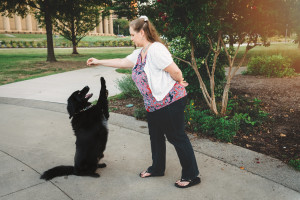Just last week a NJ rescue I was formerly associated with (I resigned 4 years ago, to the day, this news story broke) was charged with almost 20 counts of varying charges including falsifying records “for the purpose of deceiving prospective pet owners,” knowingly selling and/or exposing to human contact a pet with a contagious or infectious disease and false advertising, among others. (Personal note: I resigned for a number of reasons, but this practice of hiding medical conditions was among the many reasons.)
This got me to thinking about transparency, not in dog training, like I’m usually espousing, but about transparency in sheltering and rescue. In 2018 eight prominent animal welfare organizations and foundations released a joint mission statement regarding accountability and transparency regarding data sharing of the numbers of animals in their care and their outcomes. But that transparency was all about the intake/outcome numbers — how to count what and the coveted “live release rate” (LRR) that so many shelters and rescues strive to have high percentages in to uphold a “no-kill” status.
But what about transparency with adopters including what information and the quality of the information they are told? What about transparency regarding training methods or handling techniques the dogs have been exposed to? What about accuracy of age, breed, medical history and behavior, including bite history? Many of these may be disqualifiers to adoptability, which in turn would affect the LRR or other important measured criteria like length of stay at the shelter or returns. This could further impact public perception, which would impact donations. It’s a snowball effect, so it makes sense why some rescues and shelters may want to keep a tight lid on certain information.
And from personal experience, I can say that in both private rescues and sheltering, keeping information from adopters is sadly part of the adoption equation in many organizations. Younger dogs, dogs of certain breeds, dogs without health or behavioral issues, all tend to get adopted out more quickly than older dogs with behavioral or medical issues, so that could be a motivator for groups to err on the side of adoptability, rather than the truth.
Why is all of this important? Well, besides the obvious ethical/moral issues of intentionally lying or hiding information, it leads to well-intentioned people committing to adopt an animal that they believe is healthy (or a certain age or breed or with a certain behavioral or training history) but later discover fallout from that misleading information, whether it be financial (unexpected training or medical expenses) or emotional (surrendering back or euthanizing a dog the family wasn’t prepared to handle).
So how can you protect yourself? ASK, OBSERVE AND RESEARCH. Conflicting answers or reluctance to answer questions are red flags.
- Request to see all medical records, not just vaccine records. Ask if their staff or partner vet is available for you to discuss any concerns you have. Look for any discrepancies between intake paperwork and what is being advertised. Glaring age, breed or weight differences should be a red flag.
- What is the dog’s known history – not just where did this organization get the dog but what do they know before then? Was it stray? Owner surrender? Hoarder? Puppy mill dog? Meat market dog? Street dog from another country? History is important because dogs with poor early socialization or bad experiences may be may require more extensive training but be sure to confirm what they KNOW versus what they’re ASSUMING.
- What socialization has the rescue or shelter been doing with the dog, especially
 if it’s a puppy? What do they know about the dog’s formative early months of life? Do they have the puppy’s mother? Have they been using food during socialization or just exposing the dog to things without ensuring it was a positive association? (If the mother is available/known, insist on meeting her. There is a strong likelihood that if the mother is fearful, the puppies will be fearful. What you see in mom, is very likely going to be what you see in the puppies as they age.)
if it’s a puppy? What do they know about the dog’s formative early months of life? Do they have the puppy’s mother? Have they been using food during socialization or just exposing the dog to things without ensuring it was a positive association? (If the mother is available/known, insist on meeting her. There is a strong likelihood that if the mother is fearful, the puppies will be fearful. What you see in mom, is very likely going to be what you see in the puppies as they age.) - Ask to see a behavioral assessment. If the dog has come from another shelter they will have some sort of behavioral assessment from the transferring organization. Concerns should be discussed with their certified trainer (who should also be the one administering behavioral assessments). Inquire about guarding behaviors, body handling and sociability observed while the dog has been in their care. Receiving organizations often repeat these tests on their own, for insurance purposes. Ask to see them.
- Why was the dog surrendered, if the dog was an owner surrender? Was it for behavioral reasons? Many rescues and shelters often try to downplay behavioral concerns or owner blame. This is a red flag.
- Where has the dog has been while in this organization’s care? In a kennel? In a foster home? What interactions has the dog had with children, kids, cats or other dogs?
- What training methods do they use? If they don’t publicly say, ASK! What does their contract specify? It should specify they do not condone the use of aversive methods including prong, choke or shock collars or electric fences.
- Research and read reviews (dig into the hidden Yelp reviews too!) about the organization you’re considering adopting from. If they are a charitable group, check sites like Charity Navigator to see how they stack up with other orgs you’re considering.
- And lastly, OBSERVE: Before you’re ready to adopt, visit adoption events or the facility a few times. Do the animals seem happy, well cared for and the volunteers/staff happy to be doing their job? Are the dogs being happy talked and given treats? How are the animals being handled? Are they being dragged around by their leash at events? Are they cowering in their crates?
In many states there is little to no oversight to those who are taking care of homeless animals. It’s surprisingly easy to form a rescue so just claiming to be a rescue, there’s some bad ones out there.
So it’s buyer beware, and it’s up to us to help keep groups accountable. Ask lots of questions, demand answers and yes, trust your gut. Making good matches – for both the people and the dog – should be their top priority, not just trying to move out as many animals as possible.
–Kate





